Easytop concealed domestic water meter unit
Product information
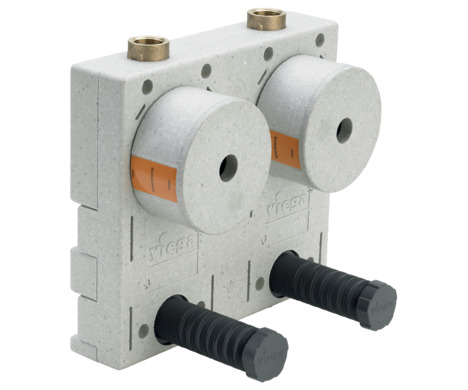
Easytop concealed domestic water meter unit
for drinking water installation
| Year built (from): | 12.8.2008 |
Trade mark rights exist for this document; for further information, go to viega.com/legal .
Target groups
The information in this manual is directed at heating and sanitary professionals and trained personnel.
Individuals without the abovementioned training or qualification are not permitted to mount, install and, if required, maintain this product. This restriction does not extend to possible operating instructions.
The installation of Viega products must take place in accordance with the general rules of engineering and the Viega instructions for use.
Labelling of notes
Warning and advisory texts are set aside from the remainder of the text and are labelled with the relevant pictographs.
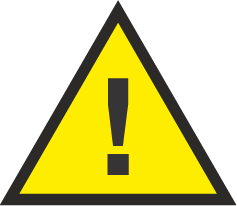
DANGER!
This symbol warns of possible life-threatening injury.
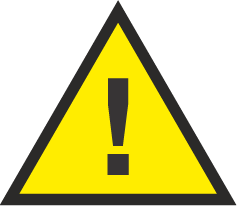
WARNING!
This symbol warns of possible serious injury.
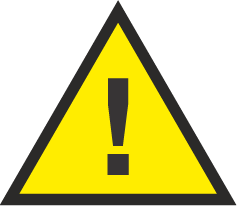
CAUTION!
This symbol warns of possible injury.

NOTICE!
This symbol warns of possible damage to property.
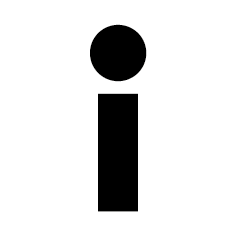
INFO!
This symbol gives additional information and hints.
About this translated version
This instruction for use contains important information about the choice of product or system, assembly and commissioning as well as intended use and, if required, maintenance measures. The information about the products, their properties and application technology are based on the current standards in Europe (e. g. EN) and/or in Germany (e. g. DIN/DVGW).
Some passages in the text may refer to technical codes in Europe/Germany. These should serve as recommendations in the absence of corresponding national regulations. The relevant national laws, standards, regulations, directives and other technical provisions take priority over the German/European directives specified in this manual: The information herein is not binding for other countries and regions; as said above, they should be understood as a recommendation.
Standards and regulations
The following standards and regulations apply to Germany / Europe and are provided as a support feature.
Regulations from section: Fields of application
Scope / Notice | Regulations applicable in Germany |
|---|---|
Planning, execution, operation and maintenance of potable water installations | DIN EN 806, part 1 |
Planning, execution, operation and maintenance of potable water installations | DIN EN 806, part 2 |
Planning, execution, operation and maintenance of potable water installations | DIN EN 806, part 3 |
Planning, execution, operation and maintenance of potable water installations | DIN EN 806, part 4 |
Planning, execution, operation and maintenance of potable water installations | DIN EN 806, part 5 |
Planning, execution, operation and maintenance of potable water installations | DIN EN 1717 |
Planning, execution, operation and maintenance of potable water installations | DIN 1988 |
Planning, execution, operation and maintenance of potable water installations | VDI/DVGW 6023 |
Planning, execution, operation and maintenance of potable water installations | Trinkwasserverordnung (TrinkwV) |
Regulations from section: Media
Scope / Notice | Regulations applicable in Germany |
|---|---|
Suitability for drinking water | Trinkwasserverordnung (TrinkwV) |
Regulations from section: Product description
Scope / Notice | Regulations applicable in Germany |
|---|---|
Suitability for drinking water installations | Trinkwasserverordnung (TrinkwV) |
Suitability for drinking water installations | DIN 50930‑6 |
Requirements in plastic components in drinking water installations | DVGW-Arbeitsblatt W270 |
Regulations from section: Threaded connection
Scope / Notice | Regulations applicable in Germany |
|---|---|
Threaded pair | DIN EN 10226‑1 |
Permitted sealants | DIN 30660 |
Permitted sealants | DIN EN 751‑2 |
Regulations from section: Corrosion
Scope / Notice | Regulations applicable in Germany |
|---|---|
External corrosion protection | DIN EN 806‑2 |
External corrosion protection | DIN 1988‑200 |
External corrosion protection | DKI-Informationsdruck i. 160 |
Regulations from section: Leakage test
Scope / Notice | Regulations applicable in Germany |
|---|---|
Leakage test for potable water installations | DIN EN 806, part 4 |
Leakage test for potable water installations | ZVSHK-Merkblatt |
Regulations from section: Maintenance
Scope / Notice | Regulations applicable in Germany |
|---|---|
Operation and maintenance of potable water installations | DIN EN 806‑5 |
Intended use

INFO!
Coordinate the use of the model for areas of use and media other than those described with the Viega Service Center.
Areas of use
Use is possible in the following areas among others:
Drinking water installations
The model serves as a shut-off for the storey units.
It provides the possibility to attach a Koax G 2 measuring capsule.
The general rules of engineering and the applicable regulations must be observed for planning, execution, operation and maintenance potable water installations, see Regulations from section: Fields of application .
Media
The model is also suitable for the following media, amongst others:
Drinking water without limitations acc. to the applicable directives, see Regulations from section: Media
maximum chloride concentration 250 mg/l pursuant to applicable regulations, see Regulations from section: Media
Product description
According to the applicable regulations, Easytop system fittings can be used for all types of potable water and are DVGW certified, see Regulations from section: Product description . Their plastic components comply with the KTW recommendation and the requirements pursuant to the applicable regulations.
Overview
The model is equipped as follows:
Site protection
valve casing made of gunmetal/silicon bronze
valve seat made of stainless steel
dual-sided Rp-thread
two concealed straight seat valves
recess for two Coax measuring capsules G 2
two blind flanges
mounting set
insulating box (sound and heat insulation)
The model is available in the following dimension: Rp ¾.
Threaded connection
Prerequisite for a threaded connection, which seals via a thread, is a threaded pair in accordance with applicable regulations, see Regulations from section: Threaded connection . Pursuant to these regulations, a permitted threaded pair comprises a conical external thread and a cylindrical internal thread, e.g. R ¾ and Rp ¾.
Only use commercially available and chloride-free, DVGW approved sealant in accordance with the applicable regulations to seal threads, see Regulations from section: Threaded connection .
Markings on components
The model is marked as follows:
flow direction indicator
dimension
DVGW writing
position indicator
Compatible components
Water meter / Measuring capsule
Observe the manufacturer's instructions for mounting and use.
Should you have any questions on this subject, please contact the Viega Service Center.
Technical data
Observe the following operating conditions for the installation of the model:
Operating temperature [Tmax] |
|---|
Operating pressure [Pmax] |
90 °C |
1.0 MPa (10 bar) |
Information for use
Corrosion
Overground pipelines and fittings in rooms do not normally require external corrosion protection.
There are exceptions in the following cases:
Contact with aggressive building materials such as nitrite or materials containing ammonium
in aggressive surroundings
If external corrosion protection is required, observe the pertinent guidelines, see Regulations from section: Corrosion .

INFO!
Easytop fittings made of gunmetal/silicon bronze are suitable for all types of potable water.
The chloride concentration in the medium must not exceed a maximum value of 250 mg/l.
This chloride is not a disinfectant, but in fact pertains to the content in sea and table salt (sodium chloride).
Optional accessories
The following optional accessories are available:
Equipment sets
Public building model
mounting set
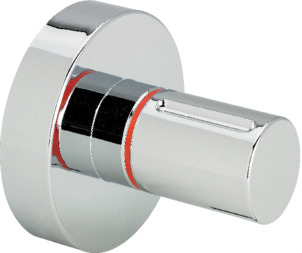
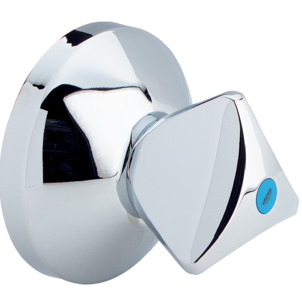
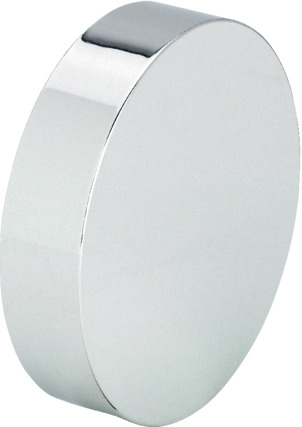
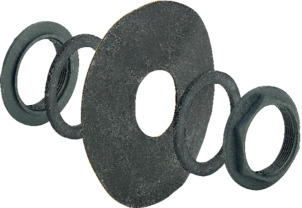
Handling
Assembly information
Installation dimensions
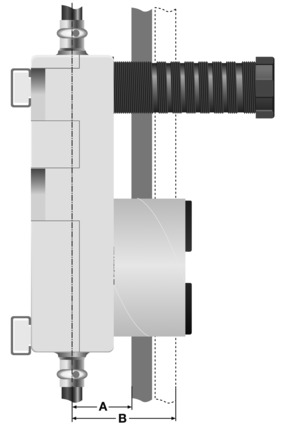
- A - at least 45 mm
- B - maximum 77 mm
Mounting instructions
Checking system components

INFO!
Do not remove the model from the packaging until immediately before use.
System components may, in some cases, become damaged through transportation and storage.
Check all parts.
Replace damaged components.
Do not repair damaged components.
Contaminated components may not be installed.
During assembly
A blind flange ensures unhindered operation until assembly is completed.
Observe the following when mounting:
flow direction indicator
minimum / maximum installation depth
use suitable tools

INFO!
Choose the place of installation so that the fitting is easily accessible and simple to operate.
Assembly
Mounting the valve

INFO!
Carry out a functionality test after initial mounting.
Installation is possible in masonry (wet construction) and in dry constructions (pre-wall / duct installations).
Attaching in dry constructions
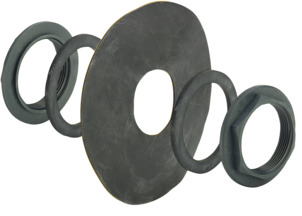
-
Attach the protective sleeve of the valve in front of and behind the cladding (e. g. sheetrock or Fermacell panels) with lock nuts.
-
Seal the wall lead-in on the front side of the wall with the self-adhesive sealing flange.
Actuating the valve
-
Open or close the valve clockwise or anti-clockwise respectively.
-
During the preliminary building work phases:
Actuate the valve via the protective cap.
Leakage test
The installer must perform a leakage test before commissioning.
Carry out this test on a system that is finished but not yet covered.
Comply with the general rules of engineering and the applicable directives, see Regulations from section: Leakage test .
Document the result.
Maintenance

NOTICE!
Inform your customer or the operator of the drinking water installation that the system has to be maintained on a regular basis.
Observe the applicable regulations for the operation and maintenance of drinking water installations, see Regulations from section: Maintenance .

INFO!
Viega recommends actuating the fitting regularly and checking its function.
Disposal
Separate the product and packaging materials (e. g. paper, metal, plastic or non-ferrous metals) and dispose of in accordance with valid national legal requirements.